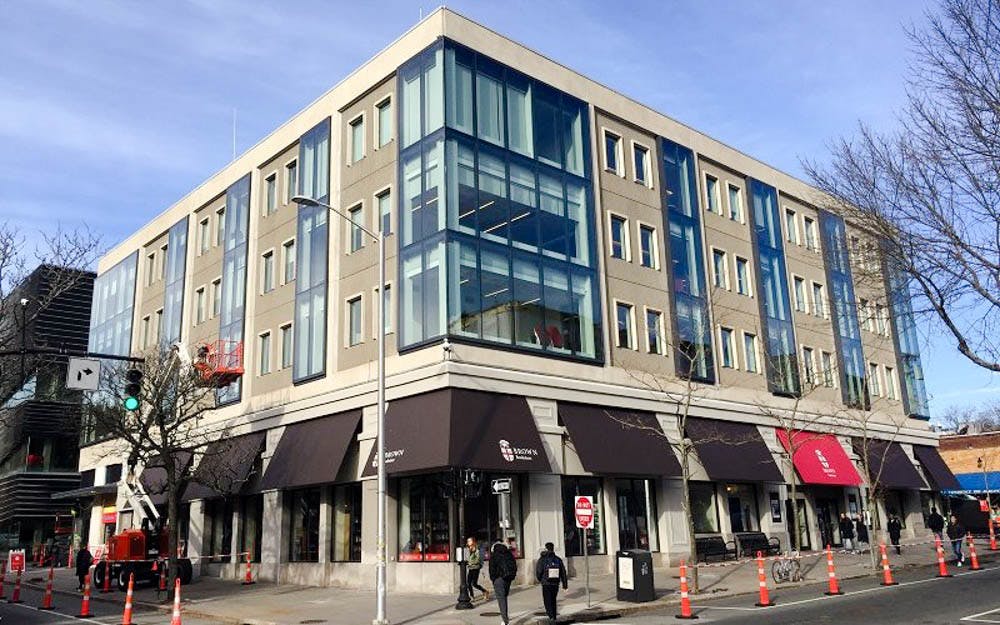As the scaffoldings came off of the University’s newest completed construction project, a renovation of 164 Angell St., occupants from five different divisions across campus moved into the office space.
The building now houses the Carney Institute for Brain Science, the Center for Computational Molecular Biology, the Data Science Initiative, the Department of Education and the Annenberg Institute for School Reform.
Following the relocation of the administrative staff from 164 Angell St. — formerly known as the Brown Office Building — the space has transformed into a “vibrant multidisciplinary hub,” wrote Provost Richard Locke P’18 in an email to The Herald.
The renovation not only improved the interior design and work environment for its occupants; it also allowed for “several centers, institutes (and) departments” to move into the same building, Locke wrote. With related research centers and departments located in such proximity, the project aims to “promote greater synergies and opportunities for collaboration,” he added. The Brown Office Building was formerly characterized by its “narrow and dark interiors.”
The renovation was anticipated to cost $24.6 million, The Herald previously reported. Marisa Quinn, chief of staff to the provost, confirmed that the construction project was completed under budget. “The transition from the long-held name of the BOB to 164 Angell has been relatively smooth,” Locke wrote. However, “renaming the facility is definitely an opportunity we would welcome,” Locke added.
Occupants who have relocated into the building confirmed that the administration’s vision of a collaborative working space has become a reality. Diane Lipscombe, director of the Carney Institute for Brain Science, said that the institute’s relocation from near the athletic center allowed for “new exciting research and scholarship” opportunities.
“I will never underestimate the value of proximity to stimulate collaboration,” she added. She especially appreciated the Carney Institute’s increased interaction with one of the building’s fellow occupants, the Data Science Initiative. The two research centers look forward to hosting joint workshops and engaging students at all levels. “The space is not dependent on what department (the researchers) are in, but on their desire to be in a collaborative environment depending on what research they’re interested in,” Lipscombe added.
Daniel Weinreich, interim director of the Center for Computational Molecular Biology, mirrored Lipscombe’s excitement about cross-disciplinary collaboration that will take place in this new work space. The CCMB moved from two locations — the 9th floor of the Sciences Library and the second floor of the Center for Informational Technology. To Weinreich, the main opportunity provided by 164 Angell St. is the collaboration, both within his department and with other occupants of the space, since the Computational Molecular Biology program involves “professors and students across biology, computer science and applied math.”
The new building also features updated technology that makes communication and training sessions easier for the occupants, Weinreich said. Instead of “putting someone’s iPhone in the middle of the table” for conference calls with colleagues at a different institution, the CCMB could now have seamless video conferences using a projector, he said. 164 Angell St. also has a variety of multipurpose rooms that can accommodate small collaborative gatherings among PhD and postdoctoral students or events such as a 40-person hack-a-thon, he added.
The building’s occupants also praised the smoothness and efficiency of the moving process. “The University did a good job coordinating” the move, Lipscombe said. The University provided boxes and moving services, allowing the departments to relocate and begin operations in the new space in under a week, Weinreich said.
However, the renovation did create considerable noise and disturbance to the bookstore located downstairs. TJ Cochran, store director of the Brown Bookstore, said the process was “trying because of the noise.” Throughout the construction period, some of the Bookstore’s entrances were closed, Cochran said. As a result of the construction, some customers thought the business was closed despite the signs welcoming them in, he added. In the future, Cochran does not expect much interaction between the occupants of 164 Angell St. and the Bookstore staff.
Although the “building systems needed overhauling,” overall, the project was “worthwhile,” Locke wrote. “I’m extremely enthusiastic about the promise of this building,” he added.





